Ye Olde Jawnz: Why the New Breed of Historical Drama Is Super Into Menswear
Just a few minutes into Autumn de Wilde’s new adaptation of Jane Austen’s Emma is a scene that period-drama costume fanatics might consider pornographic.
We meet Mr. George Knightly—the handsome thorn in our titular heroine’s side, played by Johnny Flynn—who rides over a hilltop on horseback, then plunges in and out of a bath. (It’s not actually pornographic, of course, though we do get a glimpse of his butt.) But here’s where the splendor approaches the hedonistic: a valet helps him put on a giant white shirt with an obscenely starched collar, and then delicately ties his cravat, whose silky fabric whispers against itself in a Regency Period answer to ASMR, after which he jams his feet into his big black boots, and then puts on his crisp jacket. In place of the bow-chicka-wow-wow slap bass of more familiar pornographic fare are swoony strings and playful woodwinds, from a score by Isobel Waller-Bridges.
Sumptuous scenes of characters putting on fantastical, obsolete garments are one of the primary pleasures of a film like Emma, whose costumes were created by Alexandra Byrne (who was behind the costumes for 2018’s Mary Queen of Scots and 2007’s Elizabeth: The Golden Age). But here, of course, there's a twist. The director, Flynn told Entertainment Weekly earlier this year, “said quite openly she wanted to have this moment of objectifying a man’s body—not in a sexual way, but having him dressing.”
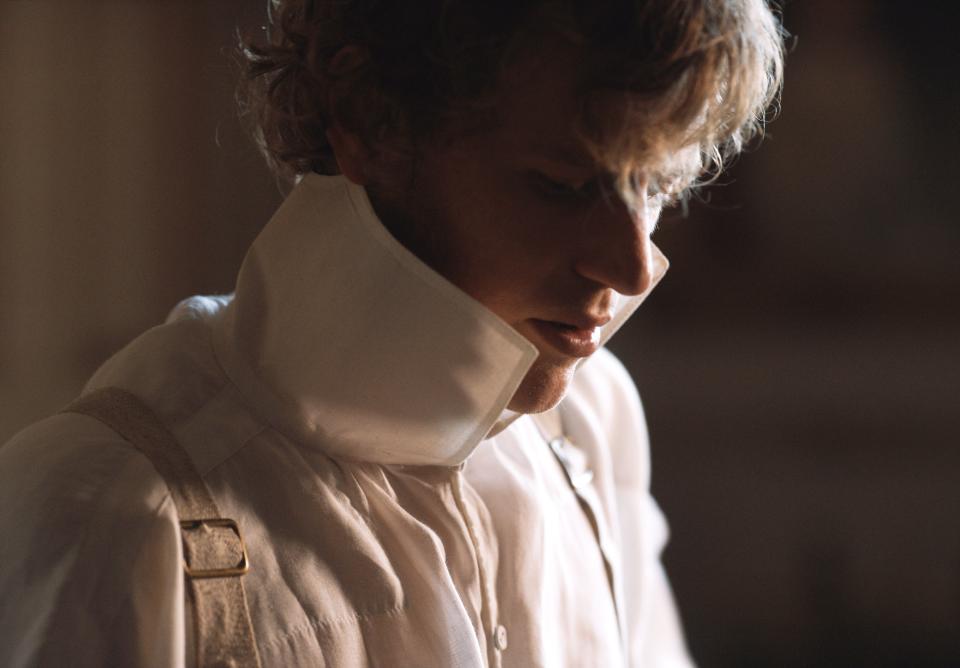
Lovers of period dramas live for this stuff—for the objectification of lavish clothes, for the familiar yanking of corsets and swaying of hoop skirts. The examples are legion: the pastry-like shoes slipped on the feet of Marie Antoinette and her posse in Sofia Coppola’s biopic of the original fashion victim; the panniers encasing Tilda Swinton in Sally Potter’s Orlando; Nicole Kidman’s Bloomsbury chintz sacks (and fake beak) in Stephen Daldry’s The Hours. But rarely are male characters treated to this kind of doting, visual splendor as they are in Emma, which was released to streaming video last week, earlier than planned due to movie theater closures in the face of the coronavirus pandemic.
It’s clear that de Wilde’s Emma is no typical Austen adaptation—but that’s not just because of the intensity with which it treats getting dressed. Austen’s novel is the story of the ultimate spoiled popular chick, Emma Woodhouse, who makes an earnest mockery of the high and frivolous art of female improvement; it was the basis for Clueless and, in what seems like prophetic casting, also served as Gwyneth Paltrow’s breakthrough role. But de Wilde, who is known for photographing boldly visual musicians like Beck, the White Stripes, and Jenny Lewis, brings something more visually forward to this adaptation, loading it with grotesque gags. In the midst of—spoiler alert, but this is an adaptation of a 200-year-old novel—a proposal, Emma gets a nosebleed, putting a horrifying stain in the middle of the film’s most sweeping romantic encounter. (Like one or two other oddball moments, this is a de Wilde addition.) The hats and hairstyles are punchlines themselves; the cakes are absurdist magic tricks; the ridiculous supporting characters are gentle jesters instead of bitter town outcasts. The overall effect is more screwball comedy than tastefully crafted period dramedy, like if Howard Hawks had gotten a hold of Coppola’s Antoinette.
What’s totally original is how de Wilde brings that sensibility to bear on the men’s costumes. Menswear, a casual Merchant-Ivory fan might tell you, is mostly a history of brown, with some...gray...in between...there. Of course, we receive something otherworldly from time to time—in Stanley Kubrick’s candlelit wig-fest Barry Lyndon, let’s say, or in the many splendid adaptations of Brideshead Revisited, in which white suits practically form the love triangle with Sebastian Flyte and the narrator Charles Ryder. But here the male costume, from its most humble expressions to its most foppish iterations, is treated as fantasy and one of the film’s raisons d’etre. It elevates men’s fashion to its most ornamental and indulgent form.
In addition to Knightley’s cravat money shot, for example, there is the slightly insane presence of Bill Nighy as Emma’s hypochondriac father. Mr. Woodhouse spends much of the film homebound, in a deliriously beautiful floral housecoat. Which would be enough, but it also harmonizes with the striped upholstered furniture and jacquard fire screens around him—and further suggests the inspiration of a traditional block-printed kalamkari textile, a vague allusion to the riches wrought by the character’s relationship to the East India Company. Even the ridiculous village priest, Mr. Elton (Josh O’Connor), looks like an ornate object, in overwrought black vestments that underscore his ridiculous, dithering nature. (Proving that Austen invented, or at least fine tuned, all contemporary male romantic archetypes, O’Connor seems just a few generations removed from his brilliantly out-to-lunch portrayal of young Prince Charles on The Crown.)
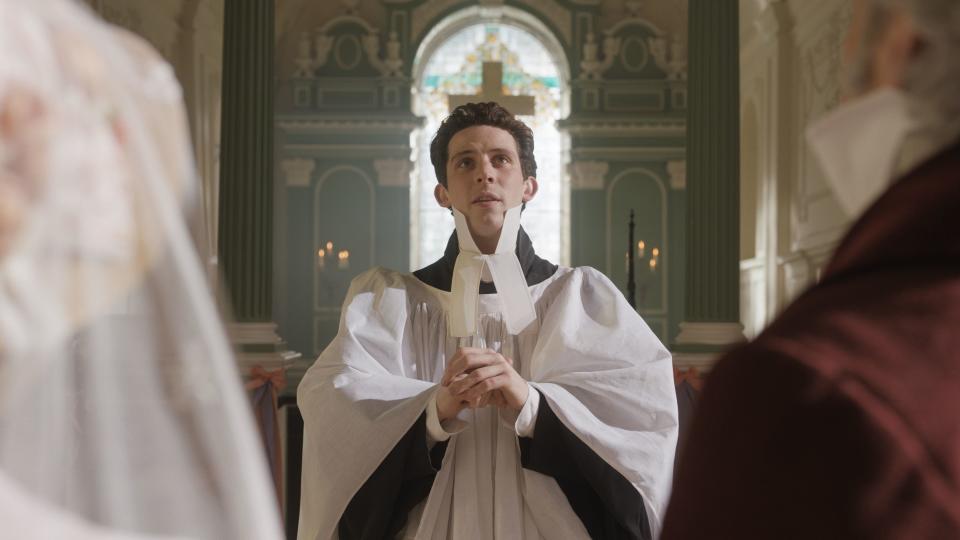
There is also the physical production. The knowingly precious set design looks practically illustrated, while the dense and slightly surreal lighting ironically casts a glare of realism on the costumes of characters of more modest means, like Robert Martin, the humble farmer boy love interest to Emma’s friend-slash-project Harriet Smith. His nubby tweeds are, quite literally, cut from a different cloth than the starched whites and beautiful frock coats of Knightley and Frank Churchill, the ultimate duplicitous rich boy idiot; the class barriers between characters are more than delicate but vinegar-tongued dialogue.
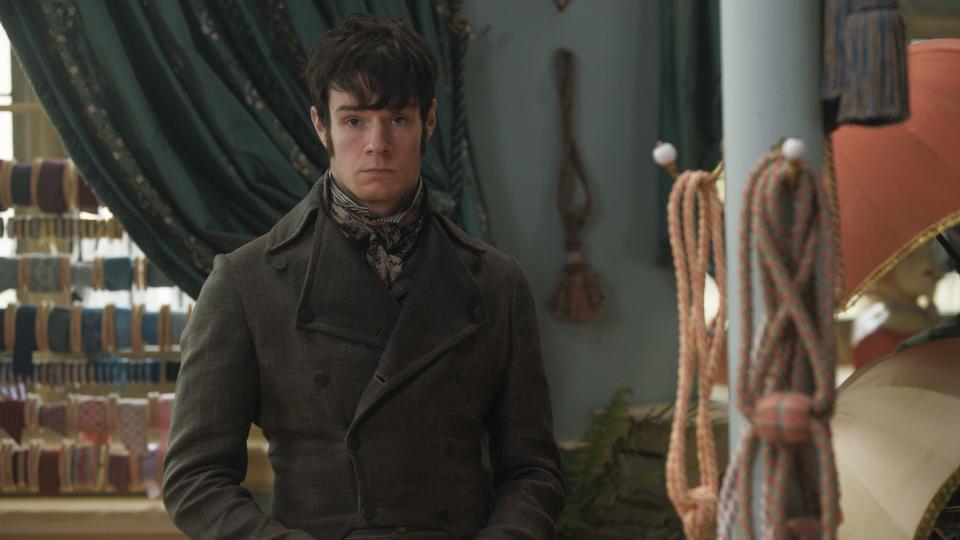
Notably, though, Emma is not the only recent film to freak the period drama paradigm. In The Favourite, Yorgos Lanthimos’s 2018 unsettled meditation on the madness of Queen Anne, we at last get Nicholas Hoult as we never knew we wanted to see him: in a powdered wig, with two spots of clownish blush on his cheeks. His blouses are magnificent, and his getups add to the point that the men are in fact the decorative ones, while the women undertake the dirty business of backstabbing, poisoning, and sexually exploiting their way up the palace food chain. And now that we know we wanted to see Hoult this way all along, he is committing to the bit by appearing in the forthcoming Catherine the Great “sitcom” The Great, in which he’ll wear a more streamlined wig as the husband to Russia’s longest reigning female ruler.
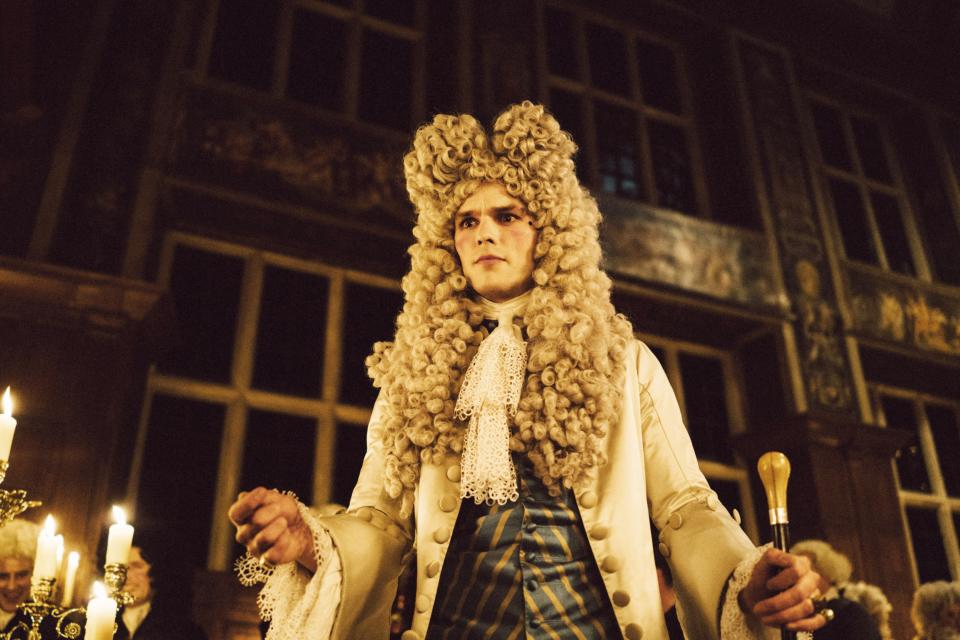
Though all these films rethink periods centuries in the past, the cinematic trend reflects a more contemporary one, as men’s fashion becomes ever more playful, oriented more and more towards a game of dress-up. Dries Van Noten, Jonathan Anderson, Gucci’s Alessandro Michele, and Saint Laurent’s Anthony Vaccarrello are just a few of the designers who took an imaginary attic or memory bank filled with blouses, sequins, furs, and pearls as a start point for recent collections. Fashion is becoming more and more for men a space for exploration and play. The continued use of Marie Antoinette as an inspiration in women’s fashion shows just how pervasive these historical tropes can be. The day may not be so far away that we see Regency Period menswear as a reasonable starting point for a menswear show—but until then, Mr. Woodhouse’s housecoat is already looking pretty aspirational, if you happen to be working from home.
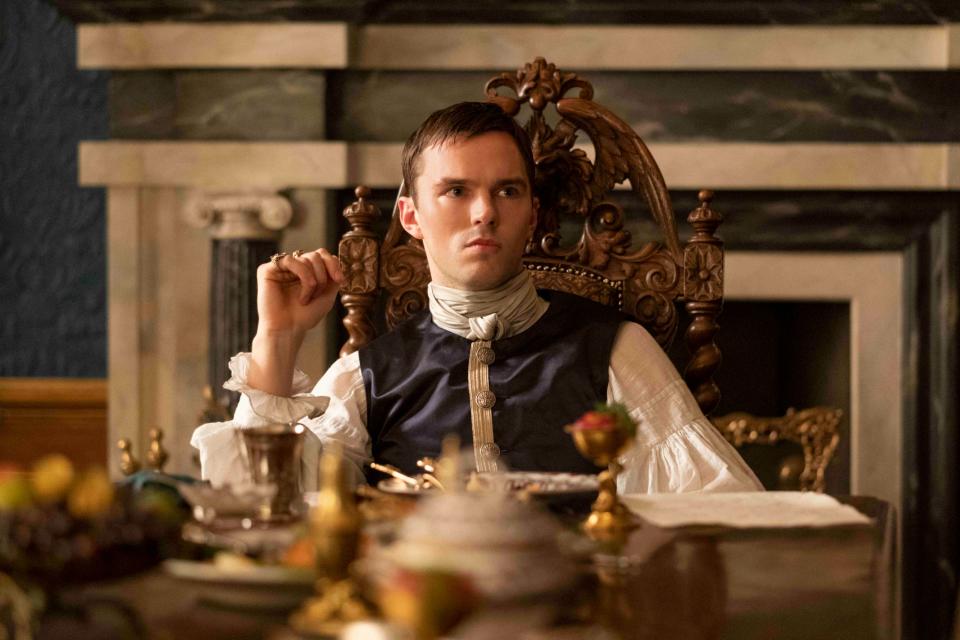
The Gift
Originally Appeared on GQ

